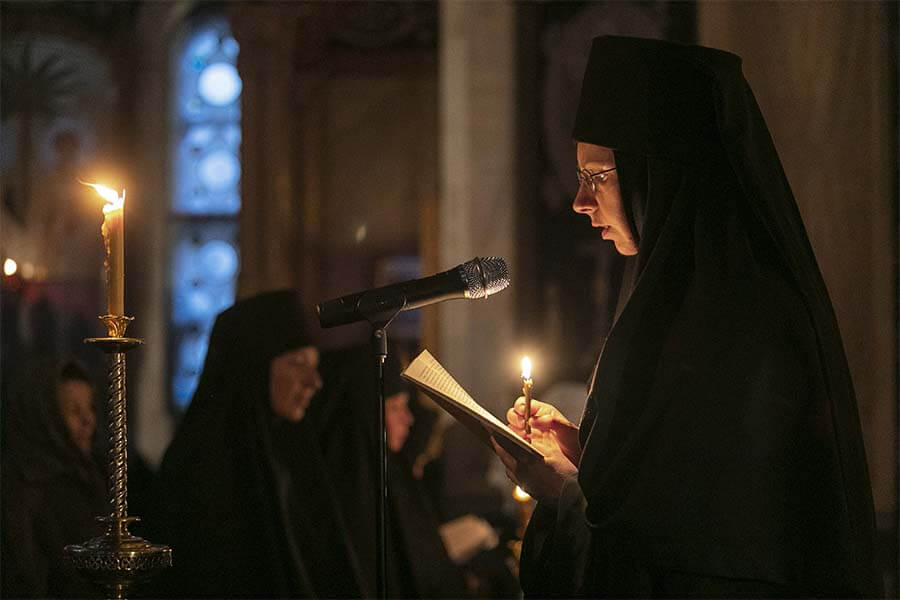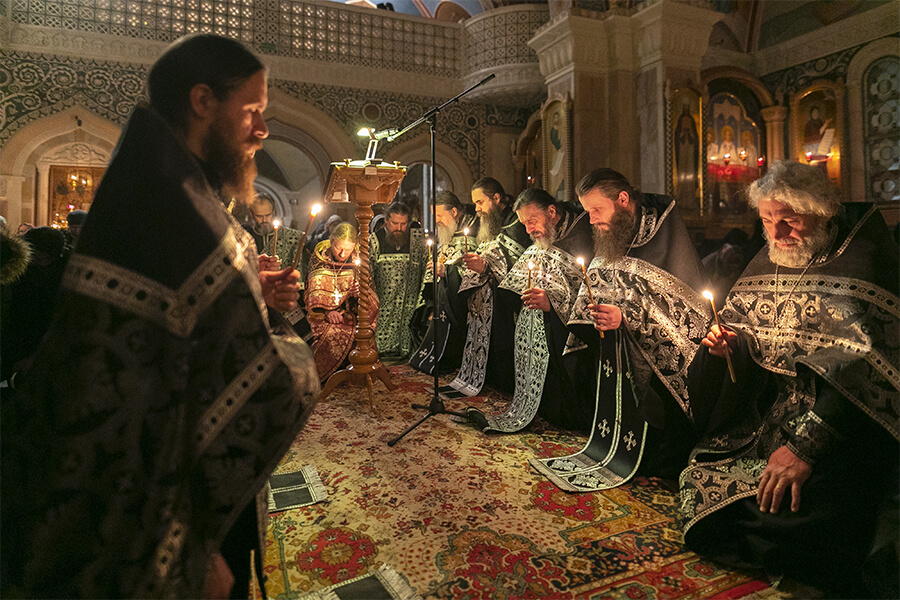![]()
Standing of St Mary of Egypt is another name for the long Matins service on Thursday of the 5th week of Great Lent. Why is this service called this and what is so special about it? We invite you to read further to find out.
Standing of Saint Mary of Egypt, also known as the Thursday of the Great Canon, is one of the longest services in the Orthodox Church. This year it falls on April 14 - the day when we commemorate St Mary of Egypt. On this day, Matins are served with two additional long readings: the full Great Penitential Canon of St Andrew of Crete and the life of St Mary of Egypt.

This service is dedicated to the feast of Saint Mary - an amazing saint who, after her sinful youth, spent 47 years in the wilderness in repentance. It is called the Standing of St Mary for two reasons. Firstly, it simply means that during the service everyone is standing. Secondly, it signifies the firm standing of St Mary against temptations, which is a great example to all of us.
On the fifth week of Great Lent, the Church invites us to spend additional time repenting, which can only help us on our Lenten journey. This is why we read the full Great Canon. In order to inspire us and help us to repent, the Church provides us with the reading of the life of St Mary.
Saint Sophronius, the Patriarch of Jerusalem of the 7th century, wrote about the extraordinary life of Saint Mary of Egypt.
Saint Mary was born in the province of Egypt around 344 AD. At 12 years of age, she ran away from her parents to the city of Alexandria where she lived a dissolute life for 17 years.
![]()
A handpainted icon of St Mary of Egypt created in our Convent*
One day she decided to travel to Jerusalem on the day of the feast of the Exaltation of the Holy Cross. She was so deep in sin that she was hoping to find more clients among the pilgrims.
When she was trying to enter a church, an unseen force kept her from doing so. She realised that the reason for that was her sinful lifestyle and was struck with remorse. Outside the church there was an icon of the Virgin Mary. She promised to the Theotokos that she would give up the world and become an ascetic.
Immediately, she was permitted to come inside the church and venerate the Holy Cross. On her way out, she walked to the same icon of the Theotokos to thank the Mother of God, when she heard her voice saying,
"If you cross the Jordan, you will find glorious rest."
This is exactly what St Mary did, right after receiving absolution and Holy Communion at the monastery of St John the Baptist. The next morning, she left to live in the desert, only taking three loaves of bread with her. When the bread was finished, she lived on whatever she could find in the wilderness. She was tempted by the devil many times, but prayer helped her defeat him.
About a year before her death, she recounted her life story to Saint Zosimas of Palestine. He was the only person she encountered, so she asked him to bring her Holy Communion on Holy Thursday the following year. He fulfilled her wish and she asked him to meet her on the same spot next Lent. When St Zosimas came next year, he found her incorrupt relics and buried them. She passed away after receiving Holy Communion for the second time in her life.
During the Matins service we glorify St Mary, singing those beautiful words:
“Having been a sinful woman, you became through repentance a Bride of Christ. Having attained angelic life, you defeated demons with the weapon of the Cross. Therefore, most glorious Mary, you are a Bride of the Kingdom!” (Kontakion of the feast of St Mary of Egypt)
On the very first week of Great Lent, the first four days are dedicated to reading the Canon of St Andrew of Crete. The Canon is divided into four parts and read every evening. However, on the fifth week of Great Lent, the Church invites us to hear this spiritual masterpiece of repentance one more time.

The Great Canon is one of the most astonishing liturgical texts of the Orthodox Church. It is a treasury of Orthodox hymnography, with texts of true poetic beauty. The Canon starts with those words of repentance:
“Where shall I begin to weep for the actions of my wretched life? What first-fruit shall I offer O Christ in this my lamentation? But in Thy compassion grant me forgiveness of sins–with what shall I begin to repent, for it is so difficult.”
Reading the Canon is such a great way to get into the spirit of repentance, which is one of the main tonalities of the Great Lent.
* You can order this icon and other products of St Elisabeth Convent by clicking on this link.